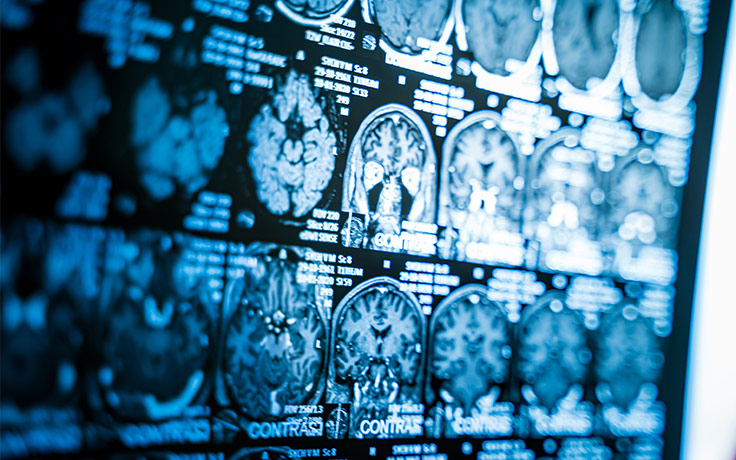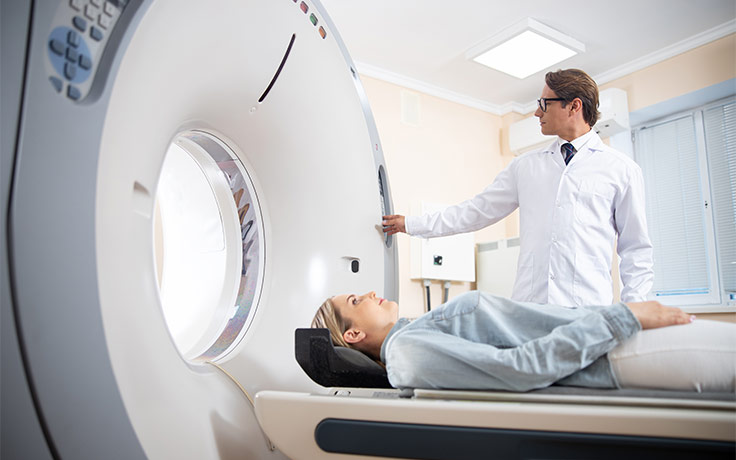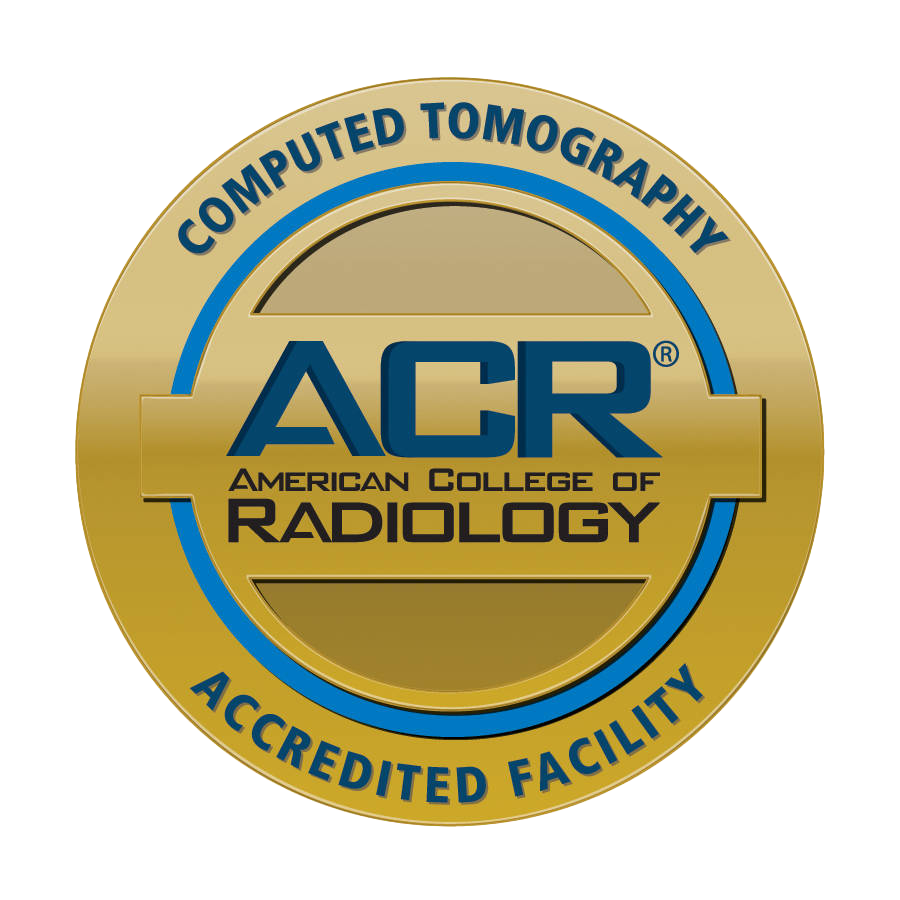CT
CT (Computed Tomography), also called a CAT scan, uses x-ray and computer equipment to produce cross-sectional images from of body tissues and organs. CT imaging is useful because it can show several types of tissue, such as lung, bone, soft tissue and blood vessels.

Common Uses for CT Scans
- Studying the neck, chest, abdomen and pelvis
- Diagnosing cancer
- Planning and administering radiation treatments for tumors
- Guiding biopsies and other minimally invasive procedures
- Planning surgery and determining surgical resectability
- Diagnosing and treating spinal problems and injuries to the hands, feet and other skeletal structures
- Identifying injuries to the brain, liver, spleen, kidneys, or other internal organs
- Detecting, diagnosing and treating vascular diseases that can lead to stroke, kidney failure, or even death

How to Prepare for Your CT Scan
- On the day of your exam, wear comfortable, loose-fitting clothing.
- Avoid clothing with zippers and snaps as metal objects can affect the image.
- Depending on the part of the body that is being scanned, you may also be asked to remove hairpins, jewelry, eyeglasses, hearing aids and any dentures.
- You may be asked not to eat or drink anything for one or more hours before the exam.
- Women should inform their doctor or CT technologist if there is any possibility that they are pregnant.
- Before administering the contrast material, you should inform the radiologist or technologist of the following:
- Allergies, especially to iodine or other medications
- A history of diabetes, asthma, kidney problems, heart or thyroid conditions. These conditions may indicate a higher risk of reaction to the contrast material or potential problems eliminating the material from the patient’s system after the exam.
Please arrive at the diagnostic center at least 15 minutes prior to your appointment for check-in and to fill out patient and safety forms.
What to Expect
- The technologist positions you on the CT table and pillows are used to help keep you comfortable and in the proper position during the scan.
- The table will move slowly into the CT scanner. Depending on the area of the body being examined, the increments of movement may be very small and almost undetectable, or large enough to feel the motion.
- You will be alone in the room during your scan, however, your technologist can see, hear and speak with you at all times. If necessary, a friend or family member may be allowed to stay in the room with you during the exam.
- To enhance the visibility of certain tissues or blood vessels, use of different contrast materials may be required. Depending on the type of examination, contrast material may be taken orally or injected through an IV.
- Oral contrast: You may be asked to swallow water or contrast material, a liquid that allows the radiologist to better see the stomach, small bowel and colon. Some patients find the taste of the contrast material to be slightly unpleasant, but tolerable.
- IV contrast: To accentuate the appearance between normal and abnormal tissue in organs like the liver and spleen, and to better define the blood vessels and kidneys, a contrast material is commonly injected into a vein. You might feel a flushed or warming sensation or may have a metallic taste in your mouth.
Frequently Asked Questions
How long does the exam take?
The exam may take anywhere from 30-60 minutes from start to finish.
Can I eat or drink before the exam?
This exam can use an injection of contrast material for your exam; therefore, you should refrain from eating or drinking for 4 hours prior to your exam.
Can I drive after the exam?
Yes, you may continue regular activities after the exam. If a prescription for claustrophobia is given, you may be required to have a ride after the exam.
Can I schedule my exam?
Imaging scans are not a self-referral exam. Your physician’s office will call us to schedule a time that is convenient for you. We will be required to have a signed order from your physician to proceed with the exam. A schedule coordinator will contact you prior to your exam to gather necessary information. This helps enable us to get you registered and back for your exam as quickly as possible.
How will I receive my results?
The specialty trained radiologists at Dakota Radiology Imaging Center will review the newly acquired images and any previous related exams. They will dictate a detailed report explaining their findings. The report is sent to your physician. Your physician will review the findings with you.
Will my insurance cover my procedure?
Many private insurance companies and Medicare provide coverage for some imaging procedures depending on medical necessity. The staff at Dakota Radiology Imaging Center will be happy to work with you to verify your benefits, eligibility and authorizations. We will submit claims as needed for your imaging scans. If the procedure cannot be covered by your insurance provider, we will be happy to develop a payment plan with you

 MRI
MRI CT
CT PET
PET Ultrasound
Ultrasound Women's Imaging
Women's Imaging X-Ray
X-Ray Bone Densitometry (DEXA)
Bone Densitometry (DEXA)